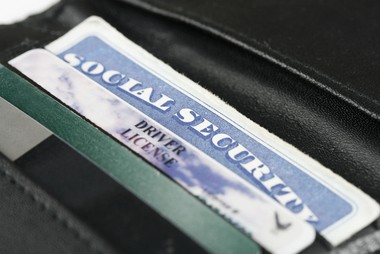Jul 02, 2024

Form I-9 asks your employees to present documents to attest to their identity and employment authorization. It's your job to make sure the documents seem genuine and relate to the employee.
Form I-9 is required by the Immigration Reform and Control Act of 1986 to verify the identity and legal work eligibility of both citizens and noncitizens. If you don't examine the required documents for I-9 verification, you risk legal complications and fines. Verifying each employee's eligibility for employment is a critical part of the hiring process; make it part of your new hire onboarding checklist.
You will need to see one of the following documents:
Other documents may also be valid but must be on the list of accepted documents. If no single document can be provided, various combinations of other documents (like a state ID and social security card) are listed as acceptable. Keep in mind that there are special rules for potential employees under 18 years of age.
Completing the form
It is your responsibility to ensure that Section 1 of the I-9 is completed properly and in a timely manner. In Section 2, record the required information about the document(s) presented, note the date that employment begins then sign and date the certification.
These steps present a problem for employees who do not live near your office. Fortunately, by checking a box on the form, you may indicate that you did not examine the documents in person.
You may also complete the Form I-9 electronically; in this way, you are more easily able to correct errors or typos. But you can correct errors made on paper forms in Section 2 or Section 3 by drawing a line through the incorrect information and entering the correct or omitted information. Then, initial and date the correction or omitted information. Do not overwrite, erase, obscure or backdate a form.
Next steps
After the I-9 is filled out and signed, you do not file the form with the U.S. Citizenship Office or U.S. Immigrations and Customs Enforcement. Instead, you retain the form.
Please note:
Further steps
If you rehire an employee within three years of their last date of employment with your company, or if an employee has a legal name change, complete the rehire section (Supplement B) of the I-9. This will help verify that none of the employee's documents have expired.
You may conduct an internal audit of your existing Form I-9s to ensure ongoing compliance. Completing an audit of all I-9s at once avoids any perception of discriminatory or retaliatory audits. You should let employees know the primary reason for the internal audit: that you are addressing any Form I-9 deficiencies that may be revealed by the audit. If you discover an error or omission in Section 1 of an employee's Form I-9, you should ask the employee to correct the error by drawing a line through the incorrect information and entering the correct or omitted information. Then, initial and date the correction or omitted information. You may not ask employees who are already hired to complete new I-9s.
Penalties for violations of the employer sanctions provision and the anti-discrimination provision of the Immigration and Nationality Act may be imposed even if an internal audit has been performed.
©2024